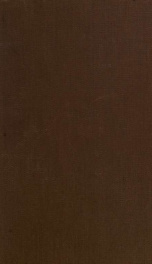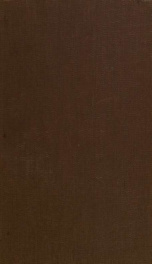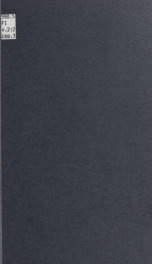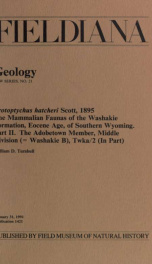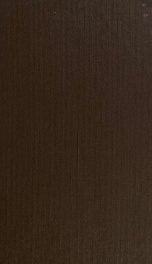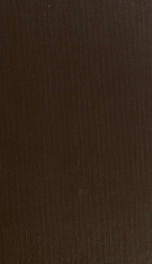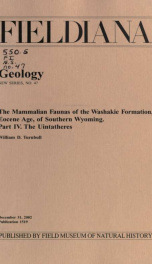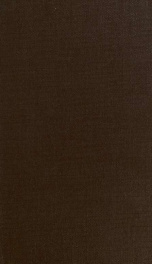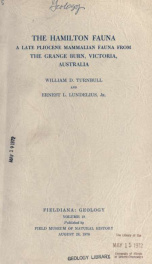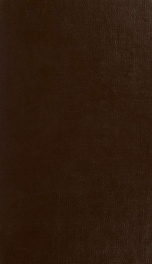The mammalian fauna of Madura Cave, Western Australia Fieldiana, Geology, new series, no. 11
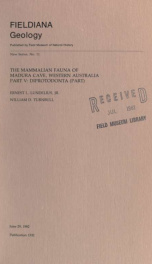
Five species of the Order Diprotodonta are reported from the deposits of Madura Cave. -- The vombatid Lasiorhinus c.f. latifrons is represented by teeth from mostly juvenile individuals from Levels 2 through 4-5 in Trenches 1, 3, and 4. Some indeterminate juvenile specimens may represent another vombatid taxon. They are present throughout the excavated sequence (7,500-38,000 years B.P.). Several specimens are noteworthy for the preservation of some of the original tooth crown features. -- Three teeth of Phascolarctos cinereus from a level in Trench 4 dated 20,000 y B.P. imply more mesic conditions than exist at present. -- One tooth each of Trichosurus vulpecula and Pseudocheirus peregrinus was recovered from units dated 20,000 y B.P. and 15,600 y B.P., respectively. Today these taxa live in more humid environments than are found on the Nullarbor. -- Sixteen mandible and eight isolated teeth of Cercartetus concinnus came from the Pleistocene units (15,000-38,000 y B.P.), but none were found in Unit 1, the Holocene unit. -- At present none of these taxa are found in the area of Madura Cave, although Lasiorhinus latifrons occurs in similar habitats in nearby South Australia and Cercartetus concinnus is found at the eastern and western edges of the Nullarbor Plain. Phascolarctos cinereus, Pseudocheirus peregrinus, and Trichosurus vulpecula are restricted to more mesic environments, and they occur only in the 15,000- to 20,000-y B.P. interval Includes bibliographical references (p. 31-32) Five species of the Order Diprotodonta are reported from the deposits of Madura Cave. -- The vombatid Lasiorhinus c.f. latifrons is represented by teeth from mostly juvenile individuals from Levels 2 through 4-5 in Trenches 1, 3, and 4. Some indeterminate juvenile specimens may represent another vombatid taxon. They are present throughout the excavated sequence (7,500-38,000 years B.P.). Several specimens are noteworthy for the preservation of some of the original tooth crown features. -- Three teeth of Phascolarctos cinereus from a level in Trench 4 dated 20,000 y B.P. imply more mesic conditions than exist at present. -- One tooth each of Trichosurus vulpecula and Pseudocheirus peregrinus was recovered from units dated 20,000 y B.P. and 15,600 y B.P., respectively. Today these taxa live in more humid environments than are found on the Nullarbor. -- Sixteen mandible and eight isolated teeth of Cercartetus concinnus came from the Pleistocene units (15,000-38,000 y B.P.), but none were found in Unit 1, the Holocene unit. -- At present none of these taxa are found in the area of Madura Cave, although Lasiorhinus latifrons occurs in similar habitats in nearby South Australia and Cercartetus concinnus is found at the eastern and western edges of the Nullarbor Plain. Phascolarctos cinereus, Pseudocheirus peregrinus, and Trichosurus vulpecula are restricted to more mesic environments, and they occur only in the 15,000- to 20,000-y B.P. interval Fieldiana series has been published as Geological Series by Field Columbian Museum (1895-1909) and Field Museum of Natural History (1909-1943), and as Fieldiana: Geology by Chicago Natural History Museum (1945-1966) and Field Museum of Natural History (1966-1978). Fieldiana Geology New Series No. 1 began June 29, 1979
Info about the book
Author:
Series:
Unknown
ISBN:
0253336430
Rating:
4/5 (4)Your rating:
0/5
Languge:
English
Users who have this book
Users who want this book
What readers are saying
What do you think? Write your own comment on this book!
write a commentif you like The mammalian fauna of Madura Cave, Western Australia Fieldiana, Geology, new series, no. 11 try:
Do you want to read a book that interests you? It’s EASY!
Create an account and send a request for reading to other users on the Webpage of the book!
